What would you do if your church mounted a large, ugly face of a horrific animal or human outside of the sanctuary? Run? Hide? That is precisely what people used to do in medieval Europe. These distorted and grotesque statues (called, gargoyles) served the purpose of channelling water down from the roof, or, more importantly, as warnings against noxious spirits. People would see these gargoyles and be reminded of the monstrous face of diabolical wickedness (hypothetically, compelling them to action).
Gargoyles appear as oddities in our modern world. Western societies have demythologised evil spirits. Non-Western societies know their reality in vivid terms. For the former, gargoyles have become curious vestiges of a forgotten era; for the latter, the topic itself remains too sensitive for any such visual prompts.
Do we have modern-day gargoyles? Regardless of where you live, the thought of chiselling some monstrous face in granite, and mounting it above the church building appears laughable. Yet might we be doing the same thing when we marshal global statistics on poverty, injustice, or viewing these global realities in two-dimensional drama, enacted on video screens and set to emotionally-stirring music? (Run power point presentation … show face of famine-stricken child in Africa … music continues … statistics run across screen …)
Now, don’t get me wrong. I think statistics and media can powerfully serve the global church. They offer a broad, horizontal, awareness to compelling realities, with fragile stories woven into the texture of twisted fabric. Global statistics on poverty, in particular, portray the distorted face of God’s goodness in human societies around the world. Like modern-day gargoyles, facts and figures, along with horrific video images of human suffering, show the contemporary face of a world gone awry…
- 1 billion people go to bed hungry every night (the most in world history).
- 17-18% of people live at extreme levels of poverty.
- 25,000 people die of hunger everyday! (mostly, children).
- 80% of humanity lives on less than $10 per day (2005 estimates).
- 121 million children do not have access to formal education.
- There are an estimated 15 million HIV-AIDs orphans worldwide (similar to the entire childhood population of Great Britain).
- In 2005, the wealthiest 20% of the world accounted for 76.6% of total private consumption. The poorest fifth, just 1.5%.
And so forth …
These facts leer down upon us, chuckling at their horror. But for all their menacing stares, the problem with statistics is that they impart an unimaginative reality, like strange runes carved into granite fixtures they appear initially shocking, but eventually, like any statue, become easily ignored. They are static realities, etched in stone: invoking fear … manufacturing guilt … and often failing to show God’s beauty amidst human melodrama.
Here is my concern. The problem is not with statistics (for they offer a one-dimensional picture of global injustices), or with multi-media (where the statistics come to life in two-dimensional frames, set to mellifluous tones) … but rather how we use these representations of evil for cultivating Kingdom realities.
Modern-day gargoyles:
- Are static, and often appear lifeless (too easily ignored).
- Imply a simplistic message in the face of multi-faceted complexity.
- Invoke guilt, rather than nurturing people in Christ-like compassion.
- Become easily manipulated … and therefore can become part of the problem.
How can we call the modern-day gargoyles to life?
My family has lived in East Africa for the last twelve years. Our first two were spent in a small, rural village in north-central Tanzania. During those years, and up to the present, I have witnessed the gargoyles coming to life. They are no longer impersonal statistics, but faces … people … and most importantly, friends. We have watched neighbours die of sicknesses easily treated. Children starve in a world of plenty. People go to bed at night afraid of the misfortunes that will greet them with morning light. Humanity is fragile. Sin wreaks destruction. Well-meaning efforts of wealthy people/nations can further complicate matters. Governments have their own agenda and motives. Money or possessions carry spiritual significance. More people die every day…
Statistics no longer appear lifeless before me … but carry names, identities and sometimes haunt my dreams with their cries.
I work in global theological education, not because of want for a better job, but precisely because of the sufferings of the world’s poor. Material realities (and in this case, their deficiency) inform the theological mind; poverty and wealth often represent distorted conceptions of goodness; God’s Word indwells all facets of an integrated cosmos, with affect toward Kingdom transformation: ‘your kingdom come, your will be done on earth as it is in heaven’.
- Let us use this discussion forum to bring the gargoyles to life … and where we can learn (together) how to nurture God’s goodness in a fractured world.
- Let us transcend simple problems, by wrestling with intricate realities.
- Let us think theologically: through word and action.
- Let us not manipulate guilt, but look for sustainable answers (framed in God’s love).
- Let us encourage one another with living testimonies of hope in our broken world.
- Let us move beyond granite theories to talk about liveable solutions.
- Above all, let us cultivate Kingdom ethics in how we talk about the poor… or represent them.
God’s people, from all around the globe …
Join the community! Ask questions … share testimonies … talk about God’s goodness… connect God’s character with His representation on this earth… let’s get beyond statistics to call the gargoyles to life, and bring the Kingdom of God to bear upon all facets of our world!

